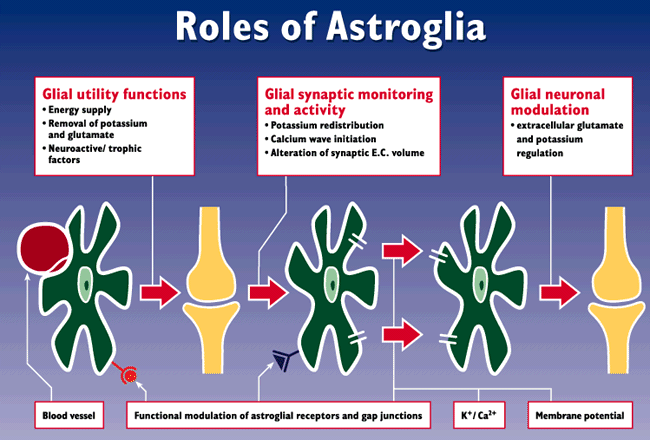
Schematic drawing demonstrating known and possible roles of astroglia such as support, monitoring and modulation of neuronal activity. Two synapses (yellow) with pre and post-synaptic membranes are shown, as well as three astroglial cells (green) and a blood vessel (red). The red arrows indicate close contact and prerequisites for communication and interactions between the respective structures.
With the state of knowledge now achieved, it seems credible that the astroglial cells "listen" to neuronal activity. Furthermore, they sense the compositions of blood and of the extracellular milieu. The information received might be integrated in the astroglial network via the newly discovered Ca2+ signaling within the electrically coupled astroglial network. Thus, different parts of the brain might be informed about the state of neuronal and environmental activities. Recent data show that the astrocytes can signal back to the neurons and thereby probably affect nerve cell activity. It is now well established that astroglia regulate the concentrations of amino acids, ions and other neuroactive substances in the extracellular space. This ability places the astrocytes in the important position of changing the extracellular environment and thereby modulating the excitability of many neurons simultaneously. Beside the fact that astrocytes can recognize and respond to impulses, the cells can produce and release many neuroactive substances, including amino acids, peptides and small proteins in the form of maturating or growth factors for the neurons. They might be of importance for neuronal maturation and their continuous rebuilding as an effect of synaptic activity. The growth factors can also be of importance for restoration of damage. Recent research points to the facts that neurons and astrocytes form functional units, and that interaction between these cell types is important to the plasticity of the nervous system. (EC = extracellular).